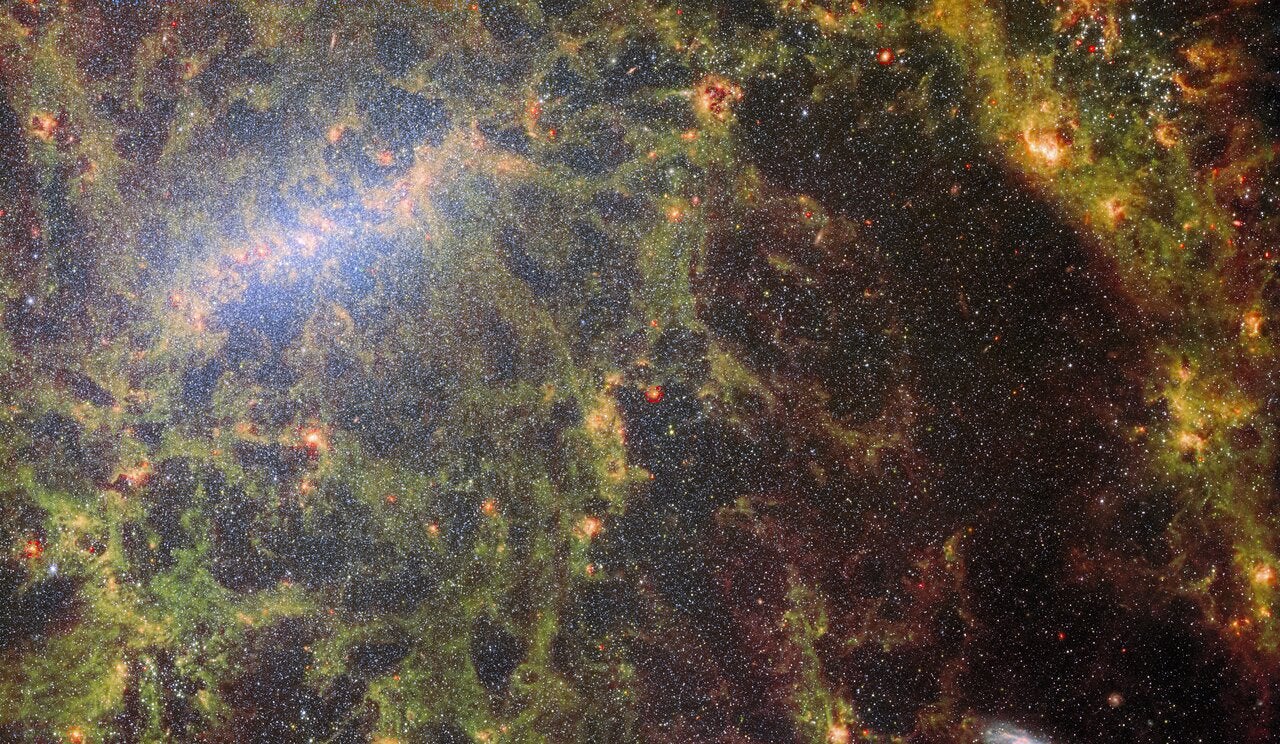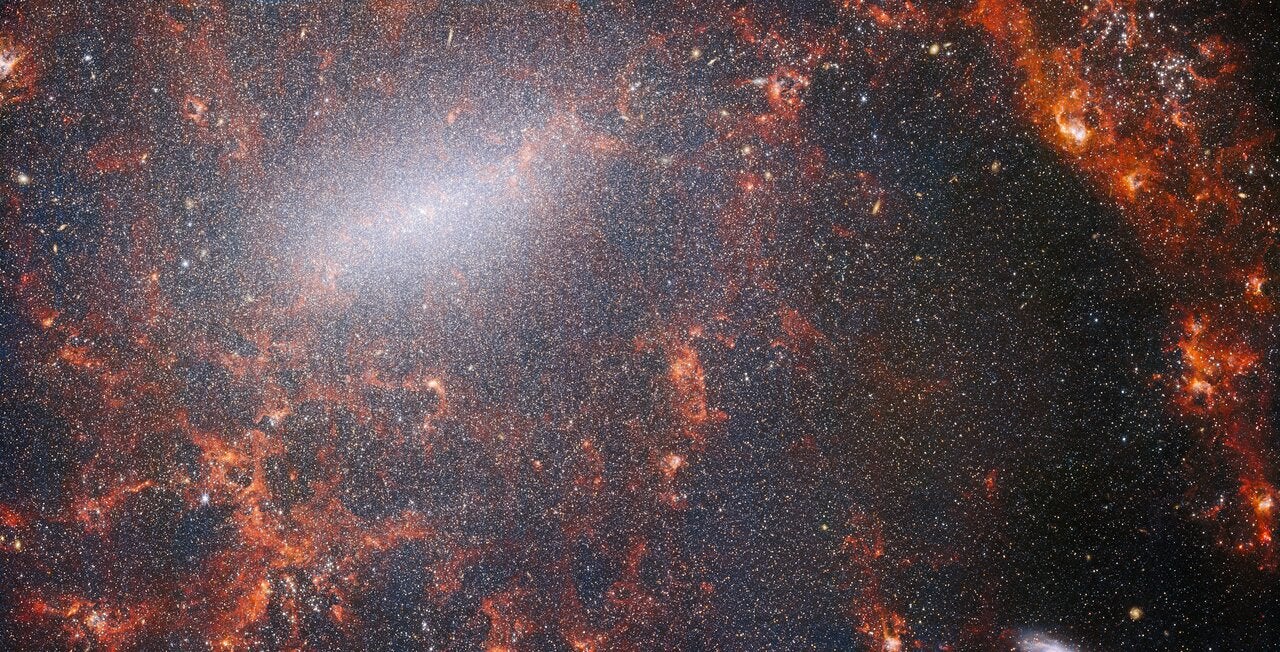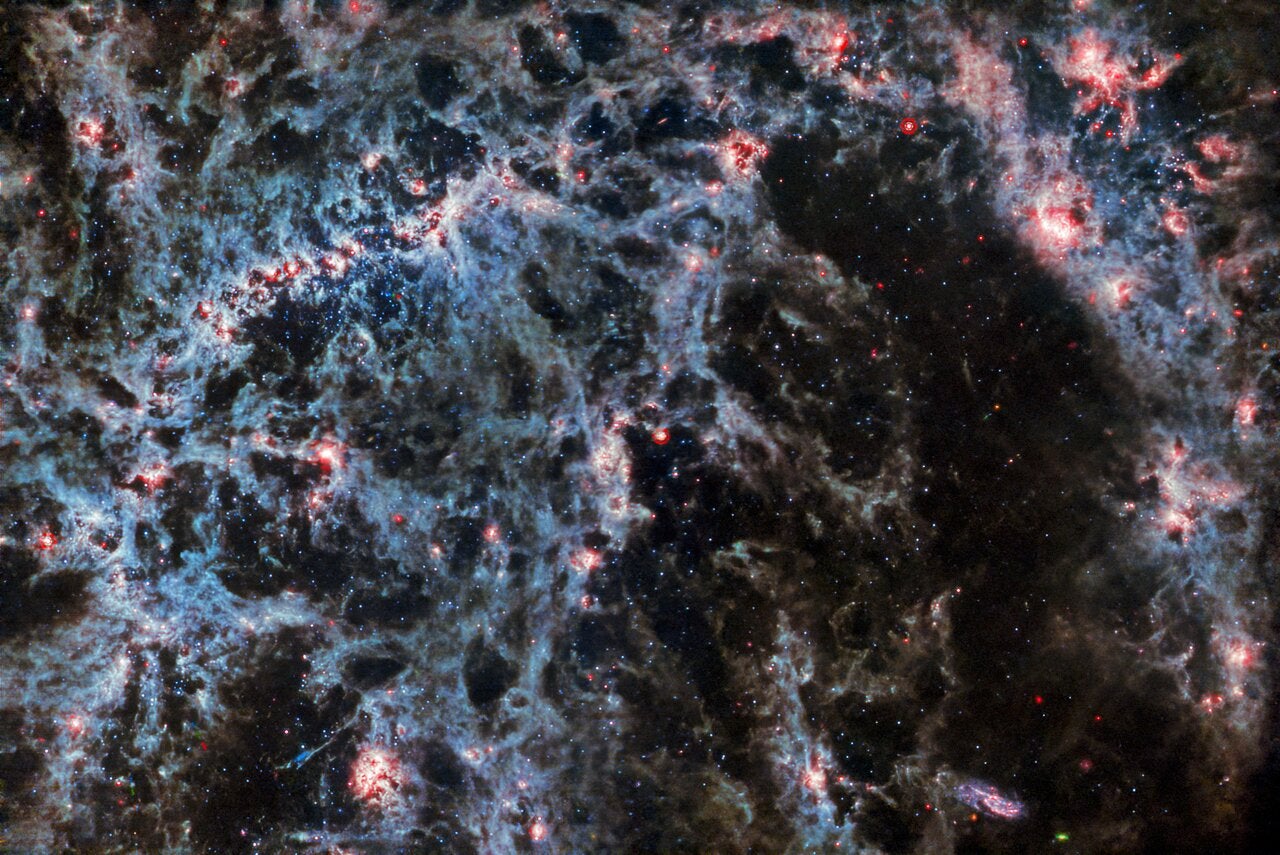
A far cry from the beautiful wide-field shots of barred spiral NGC 5068 you may be used to seeing, the the mossy green, gaseous vines that appear here offer a different view. This infrared closeup of the galaxy’s central regions highlights structures that play an important role in the development of stars in our universe.
The composite photo, taken by the James Webb Space Telescope (JWST), features a galaxy 20 million light-years from Earth in the constellation Virgo. Combining data from JWST’s Mid-Infrared Instrument (MIRI) and Near-Infrared Camera (NIRCAM), which can cut through obscuring dust and gas, it shows wispy tendrils of varying colors where star formation is occurring.
The scattered pinprick stars visible throughout are older stars throughout the galaxy’s dense center. Near the top left is the bar of NGC 5068, while the red-orange spots littering the image are clumps of new stars. The spots’ glow comes from ionized hydrogen gas energized by these hot, young suns. The swamp-colored threads throughout are intergalactic dust — fuel for more stars — along the galaxy’s arms.
The collected information from this galaxy and others like it give a glimpse into the process that creates stars throughout the cosmos. JWST over the past year has captured details of the Phantom Galaxy (M74) as well as nearly 20 others. By combining JWST’s data with 10,000 star clusters cataloged with the Hubble Space Telescope, 12,000 molecular clouds imaged by the Atacama Large Millimeter/submillimeter Array, and 20,000 emission nebulae observed by the Very Large Telescope (VLT), scientists will get the most complete picture yet of how young stars burst to life.











